Key Takeaways
1. Analytics as a competitive advantage: Transforming data into strategic insights
"Analytics can support almost any business process."
Data-driven decision making. In today's highly competitive business landscape, companies are increasingly turning to analytics to gain a competitive edge. By leveraging vast amounts of data and sophisticated statistical techniques, organizations can uncover hidden patterns, predict future trends, and optimize their operations.
Strategic differentiation. Analytics can be applied to various aspects of a business, from finance and marketing to supply chain management and human resources. The key is to identify a distinctive capability that sets the company apart from its competitors and use analytics to enhance that capability. For example:
- Netflix uses analytics to predict customer preferences and personalize recommendations
- Progressive Insurance employs analytics for precise risk assessment and pricing
- Amazon.com utilizes analytics to optimize its supply chain and customer experience
Measurable impact. Companies that successfully compete on analytics often see significant improvements in their financial performance, market share, and customer loyalty. These organizations make data-driven decisions a core part of their culture and strategy, continuously refining their analytical capabilities to stay ahead of the competition.
2. The rise of analytical competitors: Characteristics and success stories
"At a time when companies in many industries offer similar products and use comparable technology, high-performance business processes are among the last remaining points of differentiation."
Defining characteristics. Analytical competitors share several key attributes that set them apart:
- A strategic focus on analytics as a distinctive capability
- Enterprise-wide approach to data management and analysis
- Strong commitment from senior leadership
- Significant investment in analytical technologies and talent
Success stories. Numerous companies across various industries have successfully embraced analytics as a competitive advantage:
- Harrah's Entertainment: Used customer loyalty analytics to increase market share and revenue
- Capital One: Employed data-driven experimentation to optimize credit card offerings
- Procter & Gamble: Applied analytics to streamline supply chain and marketing operations
Continuous innovation. These companies not only excel at using existing data but also constantly seek new sources of information and develop innovative analytical techniques. They view analytics as an ongoing journey rather than a one-time initiative, continuously refining their capabilities to maintain their competitive edge.
3. Building a robust analytical capability: From data management to decision-making
"To remain an analytical competitor, however, means staying on the leading edge."
Foundation of quality data. Building a strong analytical capability starts with high-quality, integrated data. Organizations must invest in:
- Data cleansing and standardization
- Enterprise-wide data warehouses
- Metadata management
- Data governance policies and procedures
Advanced analytical tools. Companies need to adopt a range of analytical technologies, including:
- Statistical analysis software
- Data mining tools
- Predictive modeling applications
- Visualization and reporting tools
Decision-making processes. To truly compete on analytics, organizations must integrate analytical insights into their decision-making processes. This involves:
- Developing a culture of fact-based decision making
- Training employees to interpret and act on analytical insights
- Embedding analytics into key business processes
- Continuously measuring and refining the impact of analytical decisions
4. Human capital in analytics: Leadership, talent, and culture
"It is people who make analytics work and who are the scarce ingredient in analytical competition."
Leadership commitment. Successful analytical competitors require strong leadership support:
- CEOs and senior executives who champion the use of analytics
- A clear vision for how analytics will drive competitive advantage
- Willingness to invest in analytical capabilities and talent
Analytical talent. Organizations need to cultivate a diverse range of analytical skills:
- Data scientists and statisticians for advanced modeling
- Business analysts who can translate insights into action
- IT professionals to manage data infrastructure
- Executives who understand and value analytical approaches
Culture of analytics. Building an analytical culture involves:
- Encouraging data-driven decision making at all levels
- Fostering a test-and-learn mentality
- Promoting collaboration between analytical and business teams
- Rewarding innovative uses of analytics to solve business problems
5. The analytical architecture: Aligning technology with business strategy
"To achieve the benefits of analytical competition, IT and business experts must tackle their data issues by answering five questions: Data relevance, Data sourcing, Data quantity, Data quality, and Data governance."
Integrated infrastructure. An effective analytical architecture requires:
- Enterprise-wide data warehouses and data marts
- Business intelligence and analytics platforms
- Data integration and quality tools
- Metadata management systems
Scalability and flexibility. The architecture must be designed to:
- Handle large volumes of data from diverse sources
- Support real-time or near-real-time analytics
- Adapt to changing business needs and new data types
Governance and security. Key considerations include:
- Data privacy and security measures
- Compliance with regulatory requirements
- Standardized processes for data management and analysis
- Clear roles and responsibilities for data stewardship
6. Internal processes enhanced by analytics: Finance, manufacturing, and R&D
"Analytics have been perhaps the most analytical function within companies."
Financial analytics. Applications in finance include:
- Predictive modeling for revenue forecasting
- Risk assessment and management
- Fraud detection and prevention
- Optimization of capital allocation
Manufacturing analytics. Analytics can improve manufacturing processes through:
- Predictive maintenance to reduce downtime
- Quality control and defect prediction
- Supply chain optimization
- Production scheduling and capacity planning
R&D analytics. In research and development, analytics can:
- Accelerate drug discovery in pharmaceuticals
- Optimize product design and testing
- Predict market demand for new products
- Analyze patent data to identify innovation opportunities
7. Customer-centric analytics: Revolutionizing marketing and supply chain management
"Analytics can be applied to assess manufactured quality."
Marketing analytics. Customer-focused applications include:
- Customer segmentation and targeting
- Personalized marketing campaigns
- Churn prediction and prevention
- Lifetime value analysis
Supply chain analytics. Analytics can optimize supply chains through:
- Demand forecasting and inventory optimization
- Route optimization for logistics
- Supplier performance analysis
- Real-time tracking and monitoring of goods
Integrated approach. Leading companies are breaking down silos between marketing and supply chain functions, using analytics to:
- Align supply with predicted demand
- Optimize pricing based on supply constraints and customer behavior
- Enhance the overall customer experience through improved product availability and delivery
8. The path to analytical maturity: Stages of development and roadmap
"We have identified five stages of analytical competition, as seen in figure 2-2."
Maturity model. Organizations typically progress through five stages of analytical maturity:
- Analytically impaired
- Localized analytics
- Analytical aspirations
- Analytical companies
- Analytical competitors
Key milestones. As companies advance through these stages, they develop:
- Increasing data quality and integration
- More sophisticated analytical tools and techniques
- Broader application of analytics across the organization
- Stronger alignment between analytics and business strategy
Roadmap for progress. To move up the maturity ladder, organizations should:
- Assess their current analytical capabilities
- Identify key business areas where analytics can add value
- Develop a phased approach to building analytical capabilities
- Continuously measure progress and refine their approach
9. Overcoming challenges: Data quality, integration, and cultural resistance
"Data quality was second only to budget constraints."
Data challenges. Common obstacles include:
- Poor data quality and inconsistency
- Siloed data across different departments
- Lack of data governance and standardization
- Difficulty integrating diverse data sources
Technical hurdles. Organizations must address:
- Legacy systems that impede data integration
- Scaling infrastructure to handle big data
- Implementing real-time or near-real-time analytics
- Ensuring data security and privacy
Cultural resistance. Overcoming organizational barriers involves:
- Shifting from intuition-based to data-driven decision making
- Building trust in analytical models and insights
- Developing analytical skills across the workforce
- Aligning incentives to encourage the use of analytics
10. The future of analytical competition: Trends and emerging technologies
"The future is already here but unevenly distributed."
Emerging technologies. Future trends in analytics include:
- Artificial intelligence and machine learning
- Internet of Things (IoT) and sensor data analytics
- Natural language processing for text analytics
- Augmented and virtual reality for data visualization
Evolving applications. Analytics will increasingly be used for:
- Predictive maintenance and anomaly detection
- Real-time personalization and decision making
- Automated business processes and decision support
- Advanced risk management and scenario planning
Ethical considerations. As analytics become more pervasive, organizations must address:
- Algorithmic bias and fairness
- Data privacy and consent
- Transparency and explainability of analytical models
- Balancing automation with human judgment and oversight
Last updated:
FAQ
What's Competing on Analytics about?
- Focus on Analytics: Competing on Analytics by Thomas H. Davenport explores how organizations can leverage analytics to gain a competitive edge. It emphasizes data-driven decision-making and the systematic use of analytics across business processes.
- Analytical Competitors: The book defines analytical competitors as organizations that extensively use analytics to outthink and outexecute their competition, integrating analytics into strategic capabilities and operational processes.
- Practical Applications: It provides examples of companies like Netflix and Harrah’s that have successfully implemented analytics to enhance performance and customer engagement.
Why should I read Competing on Analytics?
- Gain Competitive Insights: The book helps readers understand how to transform their organization into an analytical competitor, crucial in today’s data-driven business environment.
- Real-World Examples: It includes case studies from various industries, illustrating how companies have utilized analytics to improve decision-making and operational efficiency.
- Framework for Implementation: Offers a roadmap for building analytical capabilities, making it a practical guide for executives and managers.
What are the key takeaways of Competing on Analytics?
- Four Pillars of Competition: Identifies key attributes of analytical competitors, including strategic capability support, enterprise-wide management, senior management commitment, and a strategic bet on analytics.
- Five Stages of Maturity: Organizations are assessed from analytically impaired to full analytical competitors, each stage representing different levels of capability and integration.
- Competitive Advantage: Analytics can lead to sustainable advantages when they are hard to duplicate, unique, adaptable, better than the competition, and renewable.
What are the best quotes from Competing on Analytics and what do they mean?
- "In God we trust; all others bring data.": Emphasizes the importance of data-driven decision-making, suggesting that intuition alone is insufficient for effective management.
- "We are in a transition from analytical customer-relationship management to real-time customer analytics.": Highlights the shift towards using analytics for immediate decision-making to enhance customer experiences.
- "The key message is that the frontier of decisions that can be treated analytically is always moving forward.": Underscores the evolving nature of analytics and the need for continuous adaptation.
How does Competing on Analytics define analytical competition?
- Definition: Analytical competition involves using data and analytics to drive business decisions and strategies, leading to superior performance compared to competitors.
- Importance of Data: Organizations must collect, analyze, and act on data strategically, not just having data but also the capability to interpret and utilize it.
- Continuous Improvement: It requires ongoing refinement of analytical capabilities and processes to adapt to changing market conditions.
What are the five stages of analytical capability in Competing on Analytics?
- Stage 1: Analytically Impaired: Organizations lack necessary data and analytical capabilities, often operating without clear performance metrics.
- Stage 2: Localized Analytics: Analytics are used in isolated departments, lacking a cohesive strategy, leading to some improvements but not a unified approach.
- Stage 3: Analytical Aspirations: Organizations recognize analytics' value and start developing integrated capabilities, facing hurdles in full implementation.
- Stage 4: Analytical Companies: Firms have a strong analytical foundation, using analytics for competitive advantage but not fully leveraging enterprise-wide.
- Stage 5: Analytical Competitors: Organizations fully commit to analytics as a core strategy, leading to significant competitive advantages and superior performance.
How do analytics contribute to business performance according to Competing on Analytics?
- Improved Decision-Making: Organizations using analytics make more informed decisions, leading to better outcomes and outperforming peers.
- Enhanced Operational Efficiency: Analytics optimize processes, reduce costs, and improve service delivery, exemplified by companies like Marriott.
- Customer Insights and Retention: Analyzing customer data helps understand preferences and behaviors, improving retention strategies, as seen with Harrah’s.
How can organizations build analytical capabilities according to Competing on Analytics?
- Roadmap for Development: Provides a roadmap outlining key steps and prerequisites for success, including establishing a strong data foundation and investing in technology.
- Focus on Human Resources: Cultivating a skilled workforce in analytics is crucial, hiring and training employees proficient in analytical methods.
- Executive Sponsorship: Strong commitment from senior management is essential for fostering a culture of analytics, integrating it into the strategic framework.
What role does technology play in Competing on Analytics?
- Support for Analytical Processes: Technology is essential for managing and analyzing large data volumes, enabling insights that inform decision-making.
- Integration with Strategies: A robust technical environment must align with business strategies, requiring investment in technology and human resources.
- Continuous Improvement: Technology must evolve alongside analytical capabilities, keeping organizations on the cutting edge of tools and methodologies.
What role does culture play in analytical competition according to Competing on Analytics?
- Cultural Shift Needed: A cultural shift is necessary for organizations to embrace analytics fully, moving from intuition-based to data-driven decision-making.
- Encouraging Data Use: Creating an environment where employees feel comfortable using data in decision-making processes, promoting collaboration.
- Resistance to Change: Resistance can hinder progress; organizations must demonstrate analytics' value through successful case studies and results.
How do companies like Amazon and Best Buy utilize analytics according to Competing on Analytics?
- Amazon's Approach: Uses analytics to optimize supply chain, personalize experiences, and forecast demand, enhancing customer satisfaction and efficiency.
- Best Buy's Segmentation: Employs analytics for customer profiles and tailored marketing strategies, creating targeted promotions that drive sales.
- Continuous Improvement: Both companies refine analytical capabilities to adapt to market conditions, leveraging data to innovate and stay competitive.
What are some challenges organizations face in implementing analytics according to Competing on Analytics?
- Data Quality Issues: Poor data quality can undermine analytics' effectiveness, requiring accurate, complete, and timely data.
- Integration of Systems: Integrating various data sources and systems is complex, needing investment in technology and processes for a cohesive environment.
- Cultural Resistance: Resistance from employees accustomed to traditional methods can impede analytics adoption, needing a culture that values data-driven insights.
Review Summary
The reviews for Competing on Analytics are mixed. Some readers find it a valuable overview of analytics in business, praising its frameworks and high-level insights. Others criticize it for lacking depth, being outdated, and relying on buzzwords. Positive reviews highlight its usefulness for managers and those new to analytics, while negative reviews argue it offers little practical advice. Many readers agree the book provides a good introduction to analytics in business but may not offer enough detailed guidance for implementation.
Similar Books
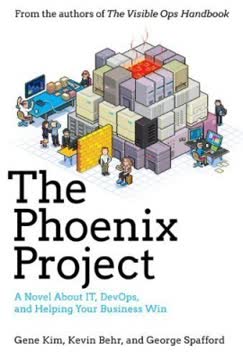
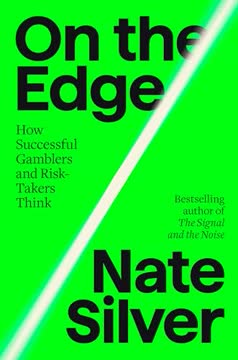

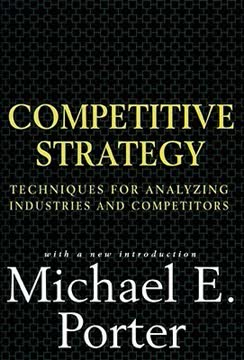

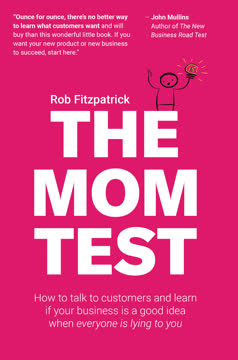
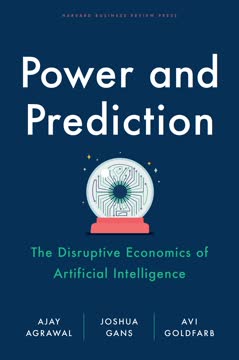



Download PDF
Download EPUB
.epub digital book format is ideal for reading ebooks on phones, tablets, and e-readers.







